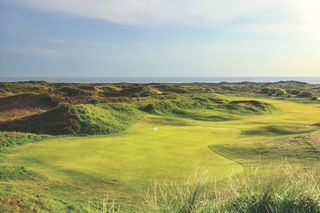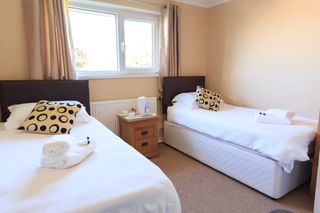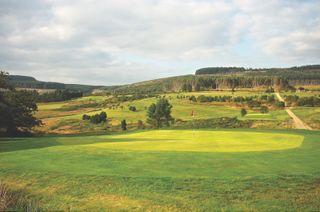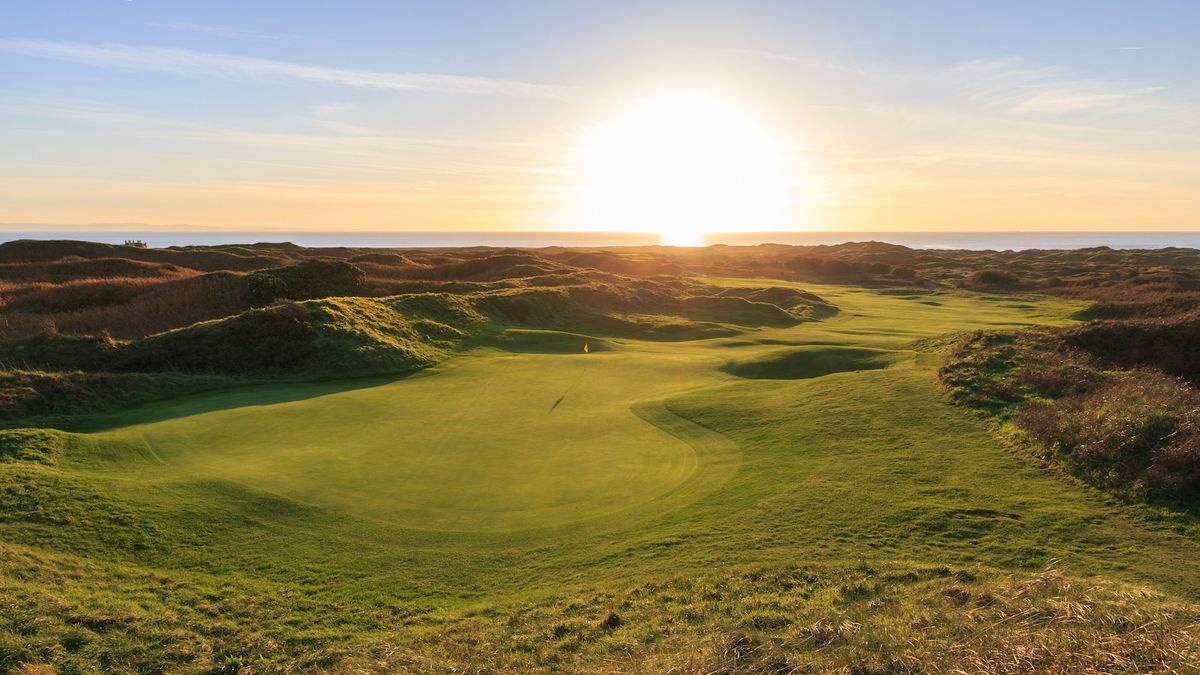The star of Bridgend’s golfing landscape is Royal Porthcawl, where the first few holes bring alive all one’s golfing senses. But my mission on this trip was to explore what else can tempt the golfer to this part of south Wales.
First stop was Coed-y-Mwstwr Golf Club. Its 1st hole takes some finding. The nearest tee box to the clubhouse is 7 (formerly the 1st hole of a 12-hole course). To find the 1st tee you go halfway down the 7th fairway, turn left, cross a road, and encounter paths heading left and right, with no obvious clue as to which to pick. I chose right and we embarked on an unguided tour of this part of the golf course. Pick left.
Variety is the spice of life
The 1st hole was worth it when finally located, a par 4 swooping down from the tee before climbing to the green, set against a pretty backdrop of hillside and trees. The first six holes are on this side of the single-track lane running to the Coed-y-Mwstwr hotel where we earlier had a splendid lunch – I heartily recommend their Eton Mess. An even better gastronomic delight was that evening’s meal at the Great House hotel in Laleston.
The 1st is one of the prettiest holes on the course at Coed-y-Mwstwr
(Image credit: Roderick Easdale)
Coed-y-Mwstwr’s first half dozen holes have the most personality and elevation changes. If the 1st is the prettiest, the 5th has the most character, a 348-yard late-turning dogleg left where the inside of the dogleg is a ruined walled garden that you can take on with your approach. The two-thirds of the course the other side of road weave and criss-cross over flatter land. An exception is the 345-yard 16th, which descends to a pretty green complex in a sunken area.

The author totting up the score at Coed-y-Mwstwr
(Image credit: Roderick Easdale)
Pyle and Kenfig’s front half is the older of its two nines. In contrast to Coed-y-Mwstwr, the 1st hole is its least impressive offering. But this nine steadily ratchets up the quality and the 4th and 6th, both short par 3s, are excellent. The back nine takes the offering up a further notch… and several notches in its middle section. Built in 1946 on linksland over the road from the front nine, it has some cracking holes and views as it weaves through the dunes.

The 14th is one of several spectacular back-nine holes at Pyle & Kenfig
(Image credit: Getty Images)
This nine is in fact 14 as it has five additional holes, called the loop, designed to take the pressure in winter off the poorer-draining holes. In summer, players have a choice of playing the main back nine, or the nine holes that incorporate the loop. We stayed in the club’s dormy house where there are four twin rooms. The beds are jolly comfy, the cooked breakfast plentiful and the service friendly and attentive.

Comfortable beds in the clubhouse dormy rooms at Pyle & Kenfig
(Image credit: Geoff Ellis)
Spectacular vistas
Maesteg Golf Club also has a younger extension created in 1946, the work of James Braid, which comprises the 1st hole, and the back nine bar the 13th. The course rolls across peaty hillside and offers wondrous views in many directions. Sadly, some of these are blotted by pylons, but where pylons are absent, such as when standing on the 8th, 14th or 18th tees, the vista is spectacular.
The pylons have their own local rule on the par-3 13th, where one towers over the tee box. A shot hitting the pylon itself is to be played where it lies, but one striking the wires has to be replayed. The ideal tee shot takes the ball up through the wires. Fortunately, unlike trees, pylon wires are actually at least 90% air. “This hole rewards unimpressive golf,” a club member told us. My ears had pricked up at this as unimpressive golf is where I excel, and I duly made par. On the next par 3 I hit the flag with my tee shot yet holed out for a 4. Did I mention I excel at unimpressive golf?

The author hit the pin on the par-3 16th at Maesteg, but alas, no ace!
(Image credit: Jeremy Ellwood)
We played on a cold, overcast April day. September is when this course looks its finest we were told. On a summer’s day with sunshine playing across the hillsides, I imagine it would be a magical place for golf.











